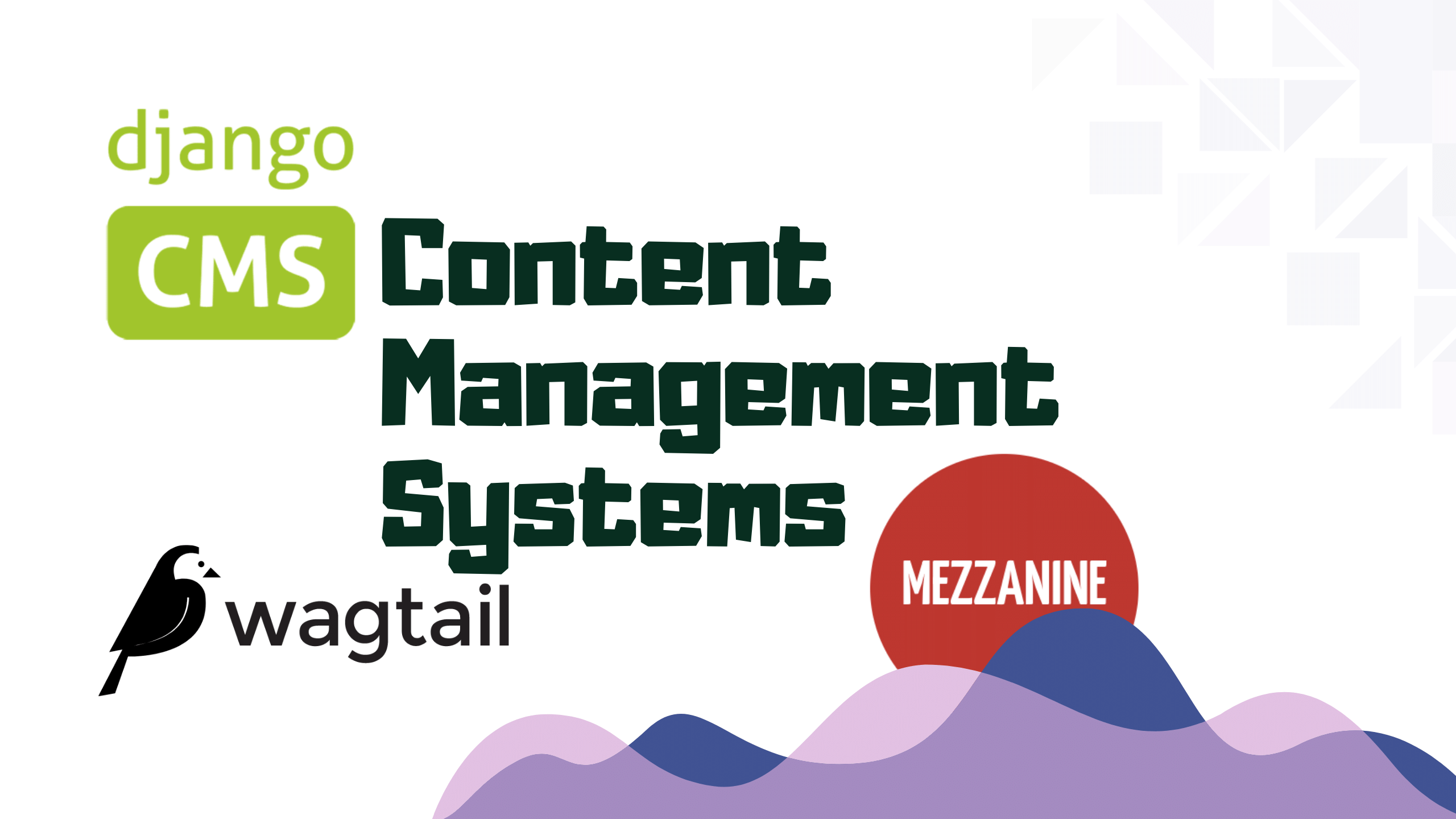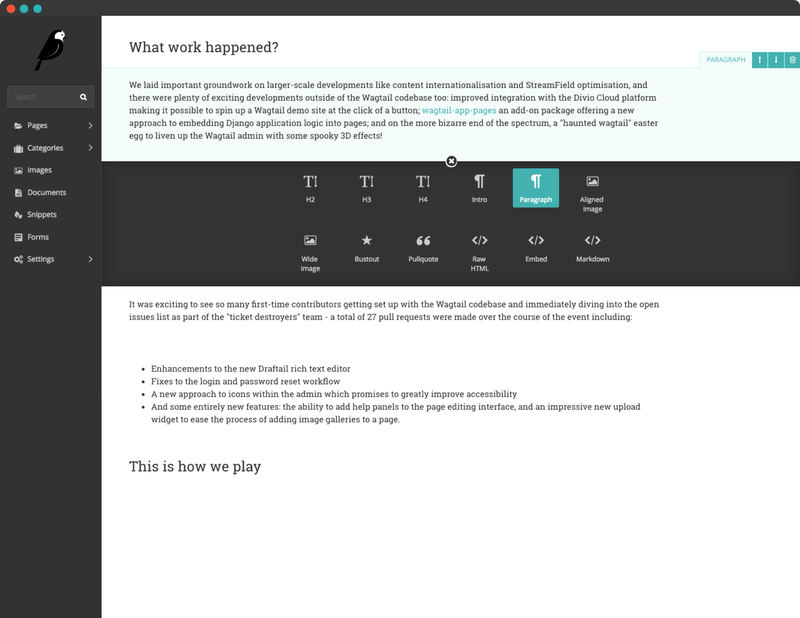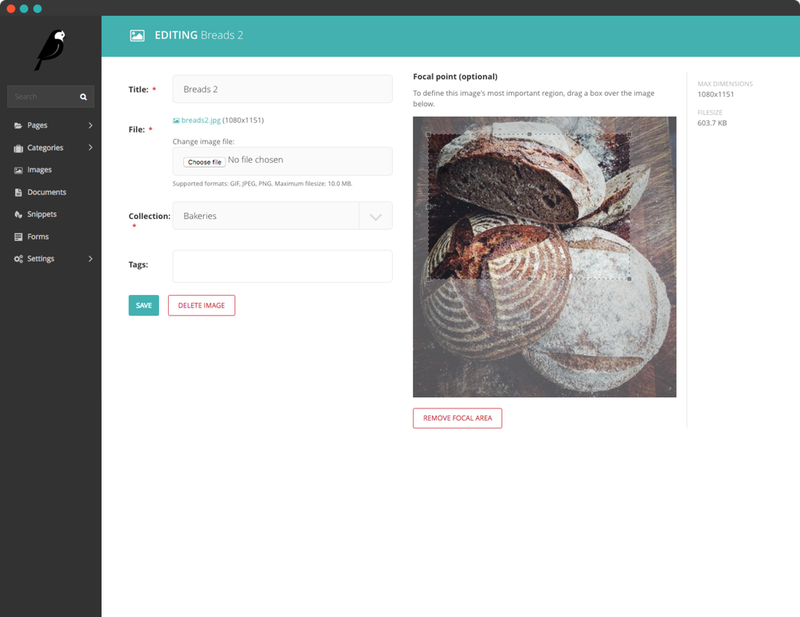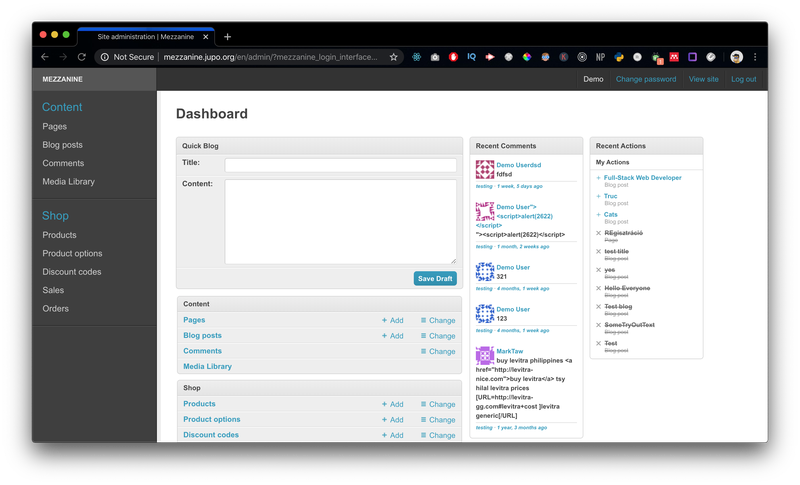
Feel free to contact.


15 Jan 2020

Hi! As we know we can integrate alot of open source packages with django and get the functionality up and running very easily. Similarly Django community has given 5 best (Content Management Systems) CMS which you can use and get the functionality with minimal effort, or at least you don't have to re invent the wheel and start with using one of them and build from there.
NOTE: The order here is random and not in any preference I like Wagtail the most out of all of these but thats maybe because it fit best my requirements your's might vary so does the solution to use...
This is a very well known and widely used CMS in django. some of its key features are as follows
There are other capable Django-based CMS platforms but here’s why you should consider django CMS:
Wagtail is also a very good competitor and is right up there in the league with is very modern UI and great user experience it has been my favorite although I might be biased in this becuase most of my interaction has been with using this CMS.
Some of its core features include:
Wagtail can be started as a new project from the start as described in their docs but it is also very easy to integrate in some existing django project. here are easy steps on how to do that.

It provides a very classy implementation of managing content by providing this easy to use UI and very straight forward method of editing the content. Wagtail also comes with the support of WYSIWYG editors and out of the box supports
Both of these editors can be customized fully to add/remove functionality.
while using the admin side of CMS the functionality of hight end Elastic Search is added by default which plays its part in keeping the user experience top notch even with alot of data.

Out of the box it comes with the thumb-nailing feature where you can use template tags to get an automatically resized image and to top that off this custom cropping has been added where you can specify the area of interest and the cropping engine makes sure that the area of interest is never cropped out of and is always visible.
Contributors to your site don’t need to publish their content to be able to view what they’ve created. Clicking on preview will generate a representation of the page for them giving the contributor the chance to tweak and change the content before publishing it to the world.
Tables are difficult to use within normal WYSIWYG rich-text editors. In Wagtail you can use a table block within StreamField to allow your users to neatly enter tabulated information in an intuitive, easy-to-use spreadsheet-style interface.
While revisions are never going to win the prize for most interesting feature they’re pretty essential to any content workflow strategy. This allows content producers, editors and managers the peace of mind that their content is version managed and that they can always go back in time to retrieve the version they need.
and much more...

TRY LIVE DEMO
User: demo Pass: demo
Mezzanine is a powerful, consistent, and flexible content management platform. Built using the Django framework, Mezzanine provides a simple yet highly extensible architecture that encourages diving in and hacking on the code. Mezzanine is BSD licensed and supported by a diverse and active community.
In some ways, Mezzanine resembles tools such as Wordpress, providing an intuitive interface for managing pages, blog posts, form data, store products, and other types of content. But Mezzanine is also different. Unlike many other platforms that make extensive use of modules or reusable applications, Mezzanine provides most of its functionality by default. This approach yields a more integrated and efficient platform.
Some of the main Features include:
One small complaint I have with mezzanine is that its a bit tidy to integrate in existing Django Project which sometimes can be the core requirement and is totally possible just can be a bit messy especially for beginners.